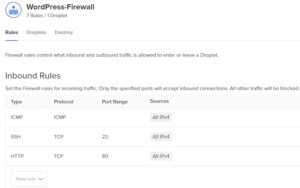You may have heard about the benefits of a high-fiber diet for your gut health, but did you know that it can also have positive effects on your overall well-being? Incorporating high-fiber foods into your meals can be a simple yet effective way to improve your health holistically.
What is High Fiber Diet?
Before we dive into the specific benefits of a high-fiber diet, let's first define what it is. A high-fiber diet is one that is rich in foods containing dietary fiber, which is a type of complex carbohydrate that cannot be digested by the body. While it may seem counterintuitive to consume a nutrient that cannot be broken down, fiber has many health benefits, including improved digestion, lower cholesterol levels, and regulated blood sugar.
Fiber-Rich Foods for Gut Health
Some of the best foods to incorporate into your high-fiber diet in order to promote gut health include fruits, vegetables, legumes, whole grains, and nuts. When selecting these foods, opt for those that are minimally processed and have not had their fiber content significantly reduced through cooking or refining.

One delicious way to incorporate more fiber into your meals is by making a fruit and veggie-packed smoothie for breakfast. Simply blend together spinach, kale, berries, and a banana with some almond milk and a scoop of protein powder for a nutrient-dense meal that will keep you full and satisfied until lunchtime.
Regulating Digestion with High Fiber Foods

In addition to promoting gut health, high-fiber foods can also help regulate digestion and prevent common digestive issues such as constipation and diarrhea. This is because fiber adds bulk to the stool, making it easier to pass through the digestive tract. Eating foods such as berries, avocados, and whole grains can also help feed the healthy gut bacteria in your gut, which can further improve digestion.
Other Health Benefits of a High-Fiber Diet
While improving gut health and regulating digestion are two of the most commonly cited benefits of a high-fiber diet, there are many other ways in which this way of eating can benefit your health. For example, studies have shown that consuming a diet high in fiber can help lower cholesterol levels, reduce the risk of heart disease, and promote weight loss. Additionally, a diet rich in fiber has been linked to a lower risk of certain types of cancer, such as colon cancer.

Incorporating high-fiber foods into your diet is easy once you know where to look. Adding whole grains such as quinoa or brown rice to your meals, snacking on nuts or seeds, and enjoying a piece of fruit with breakfast or as a mid-morning snack are all simple ways to increase your daily fiber intake.
Conclusion
A high-fiber diet is a simple yet effective way to improve your health and well-being. From promoting gut health to regulating digestion and reducing the risk of chronic disease, the benefits of a fiber-rich way of eating are numerous. So, the next time you're planning your meals, be sure to add in some of these delicious and nutritious high-fiber foods.
Remember, when it comes to fiber, more is often better, so don't be afraid to load up on fruits, veggies, and whole grains throughout the day. With a little creativity and planning, you can easily enjoy the many health benefits of a high-fiber diet.











































